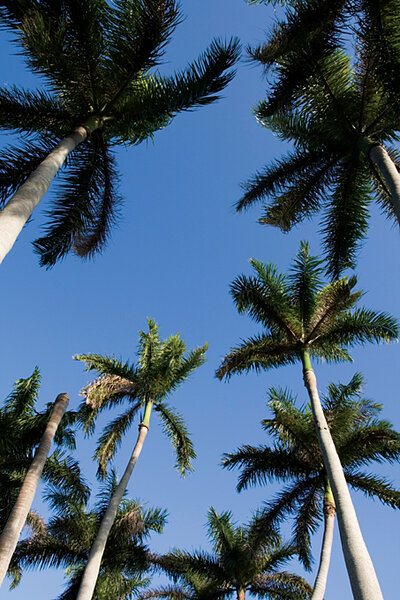Worry climbs as puzzling bacteria leaves Florida palms withering
Loading...
| Fort Lauderdale, Fla.
They are as iconic to Florida as sunshine and Mickey Mouse. But now, it appears, the state's famous palm trees are under threat by an interloper from the West.
The curiously named "Texas Phoenix palm decline" has taken root in several populations of trees. The problem has been brought on, say horticultural experts, by a tiny plant-hopping bug that chews into leaves and then vomits on them.
The bacterial condition has already been blamed for destroying thousands of palms in central and western parts of the state. Now, it's raising the unthinkable possibility of tourism magnets such as Disney World or Miami's South Beach losing their trademark trees.
"Based on our experience of other palm diseases ... there is potential for it to spread throughout the state, even into the southeastern US," says Nigel Harrison, associate professor of plant pathology at the University of Florida's Fort Lauderdale Research & Education Center. "But the truth is we don't know, which is why we are doing so much research into it."
Until now, the trees most affected have been of the Phoenix genus, which includes Canary Island date palms, edible date palms, wild date palms, and Sylvesters.
But after months of study at a field research site in Hillsborough County, Dr. Harrison's team concluded that the Sabal palm, Florida's most popular and prolific type of the tree, is especially at risk.
"It's worrisome because it's no fun to lose a significant population of trees, aesthetically or economically," he says. "We're hoping that by the nature of the Sabal palm there will be significant numbers with the genetic wherewithal to withstand this. It's a very important species found in most ecosystems in the state."
One of the main obstacles, Harrison adds, is that researchers have so far been unable to identify the exact species of plant-hopper thought to be responsible. "We've narrowed the field to three," he says.
Among the hardest-hit Florida municipalities is Lakeland, midway between Tampa and Orlando. More than half of the city's Sylvester palms have been lost, along with one-fifth of the total population of more than 7,820 palm trees, estimates Brian Dick, the assistant superintendent of parks who has served as a horticulturist for the city for more than two decades. "It's a very unfortunate circumstance," he says.
Lakeland's impressive collection of palms was built up over many years, with Mr. Dick and his workers often purchasing saplings for $100 or less and then nursing them to full size. The total value of the city's palms is about $7 million.
The city, he says, has been trying to replace the affected trees with different species of palms. But with limited budgets due to the recession, that has not always been possible.
"In [my] 23 years as a landscape gardener, this [die-off] probably [ranks] at the top in terms of the economic impact," Dick says. "There's no money to replace them all. To get all of our trees back, we might just have to wait until the economy improves."
RECOMMENDED: Under assault by stink bugs





